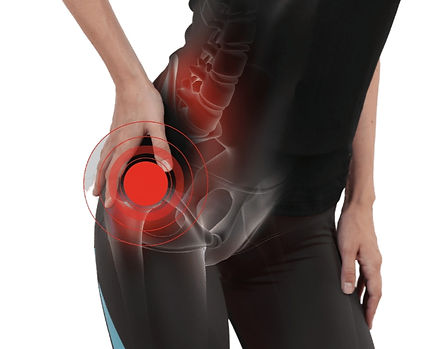_edited.jpg)
Hip Pain
Understanding the Source. Preserving the Solution.
Hip pain can affect every part of your day—from sitting and walking to running, sports, or simply getting through work without discomfort. For many young adults and active individuals, the root cause isn’t arthritis—it’s often structural.
At HipPreservation.org, we help you understand what’s really behind your pain—whether it’s femoroacetabular impingement (FAI), hip dysplasia, labral tears, or early joint degeneration—and connect you with the right path to relief.
Not all hip pain is the same. Knowing the cause is the first step toward lasting treatment.
Common Causes of Hip Pain
Not all hip pain is created equal. For many active individuals under 50, the source of discomfort isn’t always arthritis—it’s often a structural problem within the joint that develops slowly over time or worsens with movement.
At HipPreservation.org, we specialize in diagnosing and treating the four most common causes of hip pain in adolescents, young adults, and active patients:


What it is:
FAI occurs when the hip bones don’t fit together properly. Cam or pincer bone deformities lead to abnormal joint contact, which can damage cartilage and tear the labrum.
Symptoms:
Deep groin pain, stiffness, catching or clicking, pain with sitting or hip flexion (e.g., squatting, driving, tying shoes)
What it is:
A structural condition where the hip socket is too shallow to fully support the ball of the joint, causing instability and overload on the labrum and cartilage.
Symptoms:
Sharp or aching pain, clicking or catching, activity-related discomfort, feelings of instability
What it is:
Tears in the labrum—the ring of cartilage that cushions and seals the hip joint—often result from repetitive movement, impingement, or dysplasia.
Symptoms:
Pinching, sharp or catching pain, popping sounds, pain during rotation or twisting
What it is:
Degeneration of cartilage inside the hip joint, more common with age or after years of structural overload. Less common in younger patients unless preceded by FAI or dysplasia.
Symptoms:
Persistent stiffness, deep joint pain, difficulty walking or weight-bearing, worsening with time or activity
What it is:
Irritation or inflammation of the soft tissues (bursa or tendons) around the hip, often caused by overuse or biomechanical imbalance.
Symptoms:
Outer hip pain, pain when lying on your side, tenderness, tightness, aching after activity

_edited.jpg)
Occasionally, hip pain comes from conditions like avascular necrosis. Read our full guide.
The earlier you identify the true source of hip pain, the more options you have to treat it before permanent damage occurs.
.jpg)

Not sure what’s causing your pain? A targeted evaluation by a hip preservation specialist can help you avoid misdiagnosis and get on the right treatment path.
When to See a Hip Specialist
Many patients live with hip pain for months—or even years—before getting a diagnosis. It’s often mistaken for a muscle strain, tendonitis, or “just tight hips.” But when pain becomes persistent, positional, or progressive, it’s time to consult a specialist.
At HipPreservation.org, we focus on identifying and treating hip conditions early—before damage becomes irreversible. The earlier you address the underlying issue, the more treatment options you’ll have and the better your long-term outcome.
🚩 Signs You Should See a Specialist:
-
Groin, lateral, or deep hip pain that lasts more than 2–3 weeks
-
Pain that worsens with sitting, squatting, stairs, or activity
-
Clicking, catching, or locking in the hip
-
A history of being told “it’s just tightness” without improvement
-
Imaging that shows FAI, dysplasia, or a labral tear
-
Physical therapy or injections that haven’t resolved the issue
If your hip pain is affecting your performance, posture, or peace of mind—it’s worth investigating.
If your child is complaining of pain after sports, review our warning signs checklist for hip problems in active children.
Related Links:
Why Structural Hip Pain Is Often Misdiagnosed
Hip pain—especially in young, active individuals—is frequently misdiagnosed. Many patients are told their symptoms are due to tight hip flexors, a pulled muscle, or even a sports hernia, when in fact the real issue is structural.
Conditions like FAI, hip dysplasia, and labral tears can all cause subtle, gradual symptoms that mimic more common overuse injuries. And because many general providers don’t routinely order hip-specific imaging or know how to interpret it, important structural issues can go undetected for months—or even years.
Common Misdiagnoses Include:
-
Hip flexor strain instead of FAI
-
IT band syndrome instead of bursitis or dysplasia
-
Low back pain instead of joint-based labral pathology
-
Tendonitis masking deeper instability or undercoverage
-
Arthritis misapplied to young patients with mechanical problems
If you’ve been told “everything looks normal” but you’re still in pain—there’s more to evaluate.
Why This Matters:
Delaying proper diagnosis means ongoing wear on the joint, which can lead to:
-
Worsening labral damage
-
Cartilage breakdown
-
Reduced treatment options
-
Earlier onset of arthritis
At HipPreservation.org, we focus on diagnostic accuracy—using the right imaging, movement analysis, and orthopedic insight to uncover the true cause of your pain and guide a personalized plan forward.
Misdiagnosis?
❗ Still in pain but told “nothing’s wrong”?
You’re not alone. Many patients are misdiagnosed before finding answers.
Read: 5 Signs Your Hip Pain Needs a Specialist's Attention ›
Learn when to seek a second opinion—and what red flags to watch for.
📞 Take the Next Step Toward Hip Relief
If you’re dealing with persistent hip pain, don’t wait for it to get worse—or for the wrong diagnosis to lead you down the wrong path.
At HipPreservation.org, we’re here to help you get clear answers, understand your options, and protect your joint before lasting damage sets in.
Ready to move forward?
Hip pain is common—but it’s not normal. Get the insight you need to heal the right way.
.png)